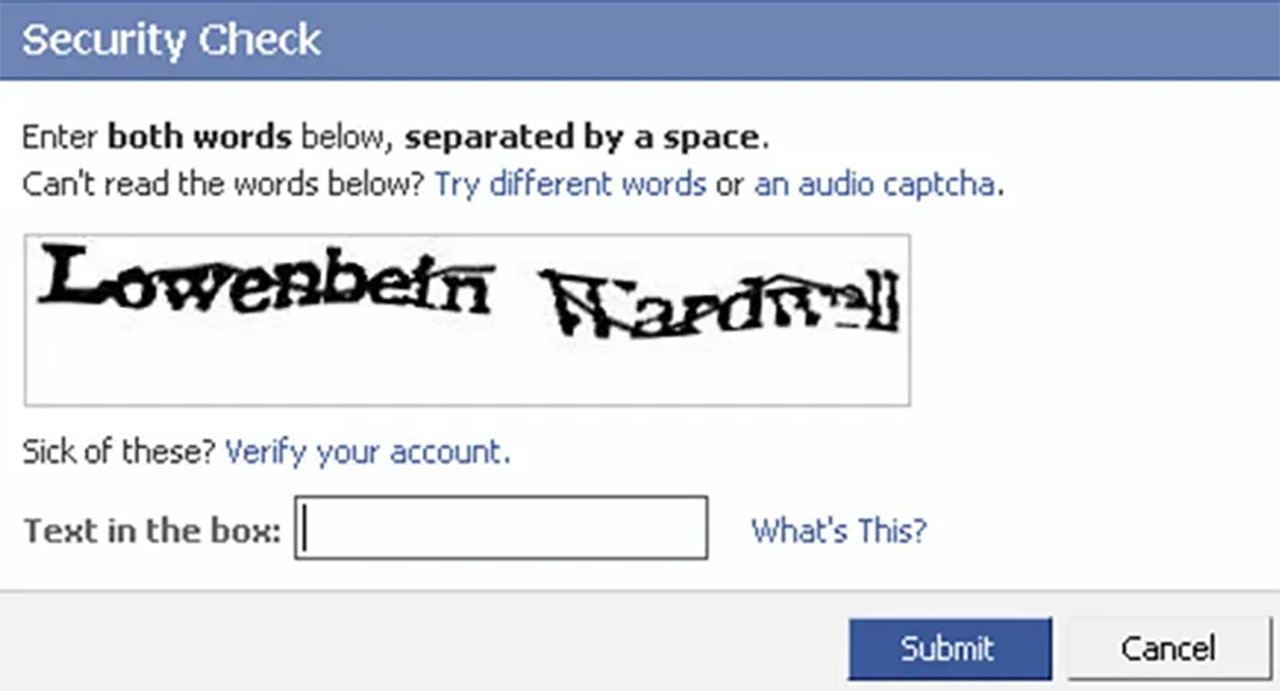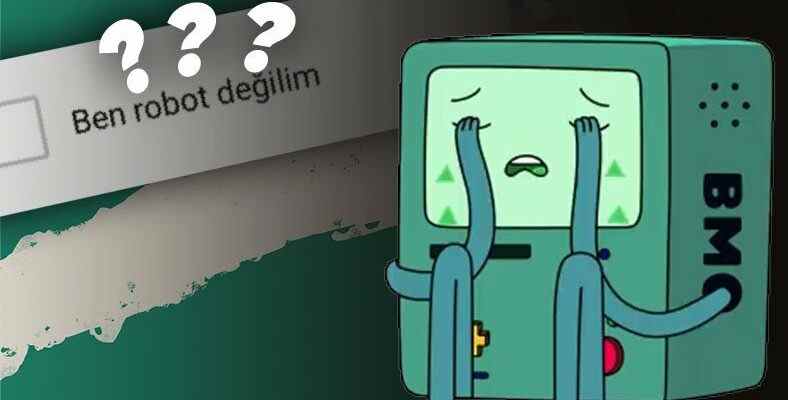Have you ever wondered why bots, which are the nightmare of websites, can’t prove they are not robots when they can do site attacks?
Today, technology, which is in a state of continuous development,automationWe see that it provides great advantages in the field of ”. In this context, we witness that functional robots and bots show themselves in both industry (such as automobile production) and entertainment (such as Discord bots).
But who can make applications from scratch, flawless programmed bots that can process material, entertain people and have many more skills, “i am not a robotIt seems that it can’t get past the ” box. So, what is behind this hair-raising situation that has been the material of countless internet memes?
Let’s fix the mistake from the beginning; There are many things that robots excel at. But we are at fault
When you see the box in question, first your cursor you’re taking it there. Maybe you even went a little too far and you’re bringing it back. For example, when you click crosswalk You are prompted to select all images containing You think on a small scale and mark images with pedestrian crossings. And congratulations, you’ve proven you’re human, now you can access the site.
Now programmed behind your back a boat try to enter. When that box appears, he won’t bother dragging the cursor there like we do. Instead, move the cursor because it knows what pixel range the tile in question is in. pinpoint it will get you there and click it. It will then instantly select all images containing a pedestrian crossing and try to enter.
But even though it has chosen the right images like you, the bot will not be able to enter the site.
Instead, an error code may appear in the verification section or CAPTCHA The (Automatic Turing Test to Separate Humans and Bots) box can loop and ask the bot to constantly find images. This keeps him away from the site. Well this verification of the right images wouldn’t he have been elected?
There’s a lot more going on behind it, and that’s where the actual validation happens:
You can see at the end of almost every site membership within Google. reCAPTCHA, is also interested in your current internet activity history. For example, if you surf the Internet for a few hours and then become a member of the site in question, which is what most of us do if we did not go online for that purpose, your chances of being human is considered higher.
But you can go directly to that page and pinpoint that box. in milliseconds Marking is not very human. Speaking of pinpointing the box, did you know that your mouse movements are also instantly monitored while you are on that page? Let’s get to this together let’s witness right now.
on your keyboard CTRL+SHIFT+J Make the combination and click once on the sidebar and paste the command “onmousemove = function(e)console.log(“mouse location:”, e.clientX, e.clientY) in quotes without including the quotes. Hover your mouse cursor over the site after pressing Enter. Did you see? It’s that easy to watch these moves.
When you look at your own cursor movements, you will see that you follow a certain path from one place to another:
But since the bots do not do this and go directly to the target, the chances of them being human near impossible. Because even if you try, you cannot tick that box like a machine. In other words, your activity on the page, your cursor movements, your internet activity from YouTube to Twitter, from Webtekno to the site you will subscribe to, and many more are analyzed and whether you are human decision is made. Therefore, the way we use the internet allows us to pass these boxes smoothly every time.
But if VPN If you are using tools like this, instant location changes can negatively affect the verification process, just like bots. In this context again and again you may have to choose an image or the verification box may give an error directly. Depending on the authentication type, you may also be able to pass, regardless of whether you use a VPN or not.
Let’s briefly describe the types of verification we are all familiar with and the methods they use:
The difference between CAPTCHA and reCAPTCHA itself, which we are blinded to trying to solve:

CAPTCHA, 1997 appeared in the year and in its first form “Are we robots?It contained words that were barely read with different lines and methods. Then when the bots start to get past it, to protect the security to CAPTCHA Added visuals that bring different challenges.
- How I felt when I couldn’t do the CAPTCHA test 10 times in a row
Let’s come to reCAPTCHA:
ReCAPTCHA “Google’s CAPTCHAWe can describe it as ”. Because different companies have the opportunity to process it in their own way. It appeared in 2007 and 2 years later Google into the receipt. In the first versions of this, it was necessary to write the word in the image as we saw in the original CAPTCHA.
of the first version in 2018 reCAPTCHA, which was unplugged, appeared in its second version with the most common box we see today. In this version, users are asked to tick the box and according to the conditions we have stated above, they are either automatically imported or “crosswalk”, “traffic lampThey need to select images from Street View, such as ”. Then they are taken to the site.
Additional info: In this version, the confirmation box can be hidden on different buttons. In other words, when you press the register button, you may be confirming that you are a robot without your knowledge. But when a friend does this, they may encounter verification based on their current internet activity.
In the third version, the direct box ticking requirement is eliminated:
Instead, the system your internet activity a statement that indicates whether you are human or not, taking into account sets the score. If your score is at a questionable level, you are asked to verify just like before. Then you can enter the site.
RELATED NEWS
List of AI-Powered Tools to Help You Put Your Dreams on Paper
As a result, we are able to surf the Internet through our flaws and because they are perfect We can say that bots are not taken to the sites. But we know that bots will adapt to these systems at some point. When that time comes, what kind of verification methods do you think will be used? You can share your thoughts in the comment section.
resources: Google, DataDome, Logically Answered
